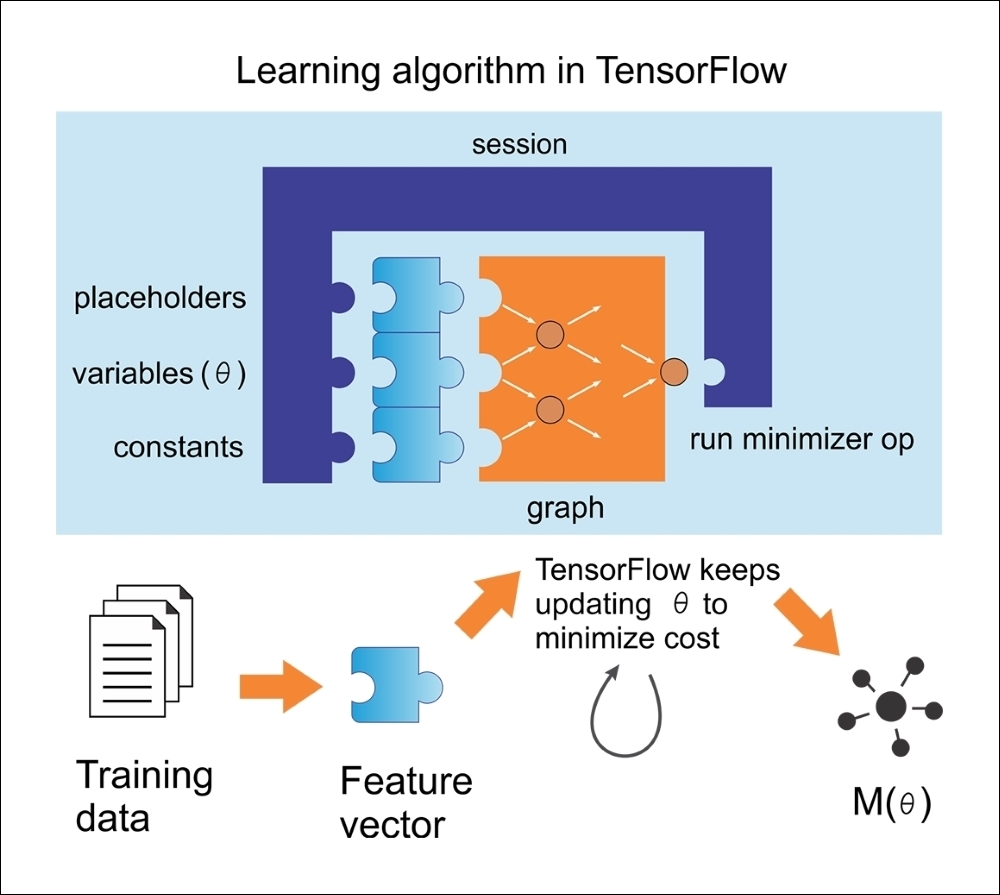Linear regression and beyond
In this section, we will take a closer look at the main concepts of TensorFlow and TensorBoard and try to do some basic operations to get you started. The model we want to implement simulates linear regression.
In statistics and ML, linear regression is a technique that's frequently used to measure the relationship between variables. This is a quite simple but effective algorithm that can be used in predictive modeling as well.
Linear regression models the relationship between a dependent variable,  , an interdependent variable,
, an interdependent variable,

, and a random term, b. This can be seen as follows:

A typical linear regression problem using TensorFlow has the following workflow, which updates the parameters to minimize the given cost (see in the following figure) function:

Figure 9: A learning algorithm using linear regression in TensorFlow
Now, let's try to follow the preceding figure and reproduce it for the linear regression by conceptualizing the preceding equation. For this, we...







































































